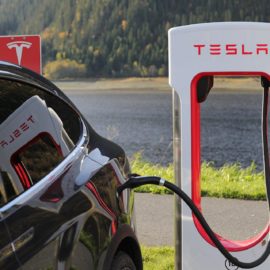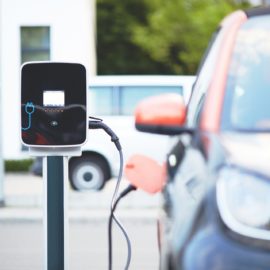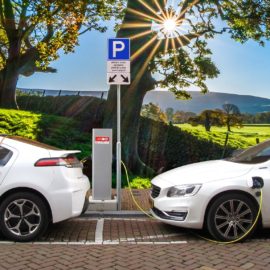
I debated long and hard on this one as why if there are not enough charging stations. Then I knew my son has one and some of the readers of this have some and then in the future many will have some so if this thought gets into our minds, it will be good. So, charging at night, if all do it, will be bad.
As electric vehicles hit the road around the country, hundreds of thousands of Americans are beginning to learn the ins and outs of car charging: how to install home chargers, where to find public charging stations, and how to avoid the dreaded “range anxiety.” But as EV owners plug in their cars, there is a looming problem: pressures on the electricity grid if most drivers continue to charge their electric cars at night. According to a new study from researchers at Stanford University, if EV sales grow rapidly over the next decade — and most drivers continue to charge their electric cars at home — vehicle charging could strain the electricity grid in the Western United States, increasing net demand at peak times by 25 percent. That could be a problem as the West struggles to keep the lights on amid heat waves and rising electricity demand.
washingtonpost.com
Filling an EV is not nearly as fast as filling a gas tank. Which means overnight charging is the easiest way.
The first thing to know about EV charging is that it’s nothing like filling a car with gasoline. Charging an electric car takes time — while the fastest chargers can charge an EV battery by 80 percent in 20 to 30 minutes, most chargers are slower, taking somewhere between two and 22 hours to get to a full charge. That means that around 80 percent of EV charging happens at the owner’s home, overnight — when the driver doesn’t need the car and can leave plenty of time for a charge. But that charging pattern is at odds with how electricity is increasingly being generated. The largest demand for electricity happens in the evening, between about 5 to 9 p.m. People come home from work, turn the lights on, watch TV and do other activities that suck up power. Solar panels, meanwhile, produce their energy during the middle of the day. The highest electricity demand, then, happens just when solar has begun to shut off for the day. In the Stanford study, researchers modeled charging behavior of residents of 11 Western states, and then analyzed how that behavior would impact an electricity grid that is switching increasingly to renewables and other clean energy sources. “Once 30 or 40 percent of cars are EVs, it’s going to start significantly impacting what we do with the grid,” said Ram Rajagopal, a professor of civil and environmental engineering at Stanford University and one of the study’s authors. Even if drivers wait until after peak hours and set their cars to charge at 11 p.m. or later, they will be using electricity at exactly the time when renewable energy is not readily available. That could lead to increased carbon emissions and a need for more batteries and storage in the electricity grid.
That means day time charging but then companies will have to provide charging stations or connections owner could hook into.
One solution, the researchers say, is if more EV owners shift to daytime charging, charging their cars at work or at public chargers. If electric cars are charged in the late morning and early afternoon, when the grid has excess solar capacity that’s not being used, there will be less pressure on the electricity system and less need for storage. According to the study, under a scenario where 50 percent of cars are electric, a shift from mostly home to a mix of home and work charging could almost halve the amount of storage needed on the grid. Adding workplace and public chargers has an added benefit of also helping renters or those who don’t own homes access EVs. Siobhan Powell, a postdoctoral researcher at ETH Zürich in Switzerland and the study’s lead author, says that the time to plan for expanding public and workplace charging is now. “We’re not saying, ‘Don’t have any more home charging’ or ‘limit home charging,’ ” she said. “We don’t want to discourage any charging because that’s really important for adoption. But there’s a lot of money going into charging, and we could make it as convenient to charge at work or in public as it is at home.”
There are other recommendations but that will involve governments and others.
The authors also recommend shifting electricity price structures to better incentivize charging in the middle of the day. At the moment, some utilities offer super-low electricity rates to consumers for charging their cars overnight. PG&E, for example, a California utility, offers EV owners electricity for 25 cents overnight between midnight and 7 a.m. and 36 cents between 7 a.m. and 2 p.m. Ideally, Rajagopal and Powell say, the cheapest rates should be in the middle of the day to incentivize charging when the sun is out. Gil Tal, the director of an electric vehicle research center at the University of California at Davis, who was not involved in the paper, said that current EV owners don’t need to worry about their charging patterns. “We don’t need to tap the brakes on adoption of electric cars,” he said. As more clean energy and storage is added to the grid, he argues, many of these issues will be resolved. But he agrees that one of the benefits of EVs is the flexibility of when they can charge. Shifting to day charging will be helpful, whether that is through charging at home during the day (for those who work from home) or providing workplace chargers. Policymakers need to “put the chargers where the cars are during the day,” he said.
We can continue to buy them and hope that the governments and companies do their part.



